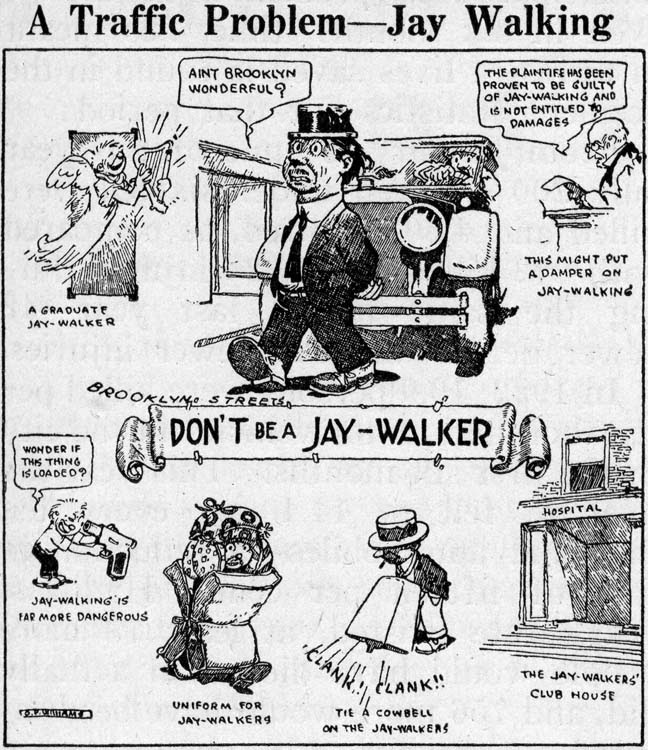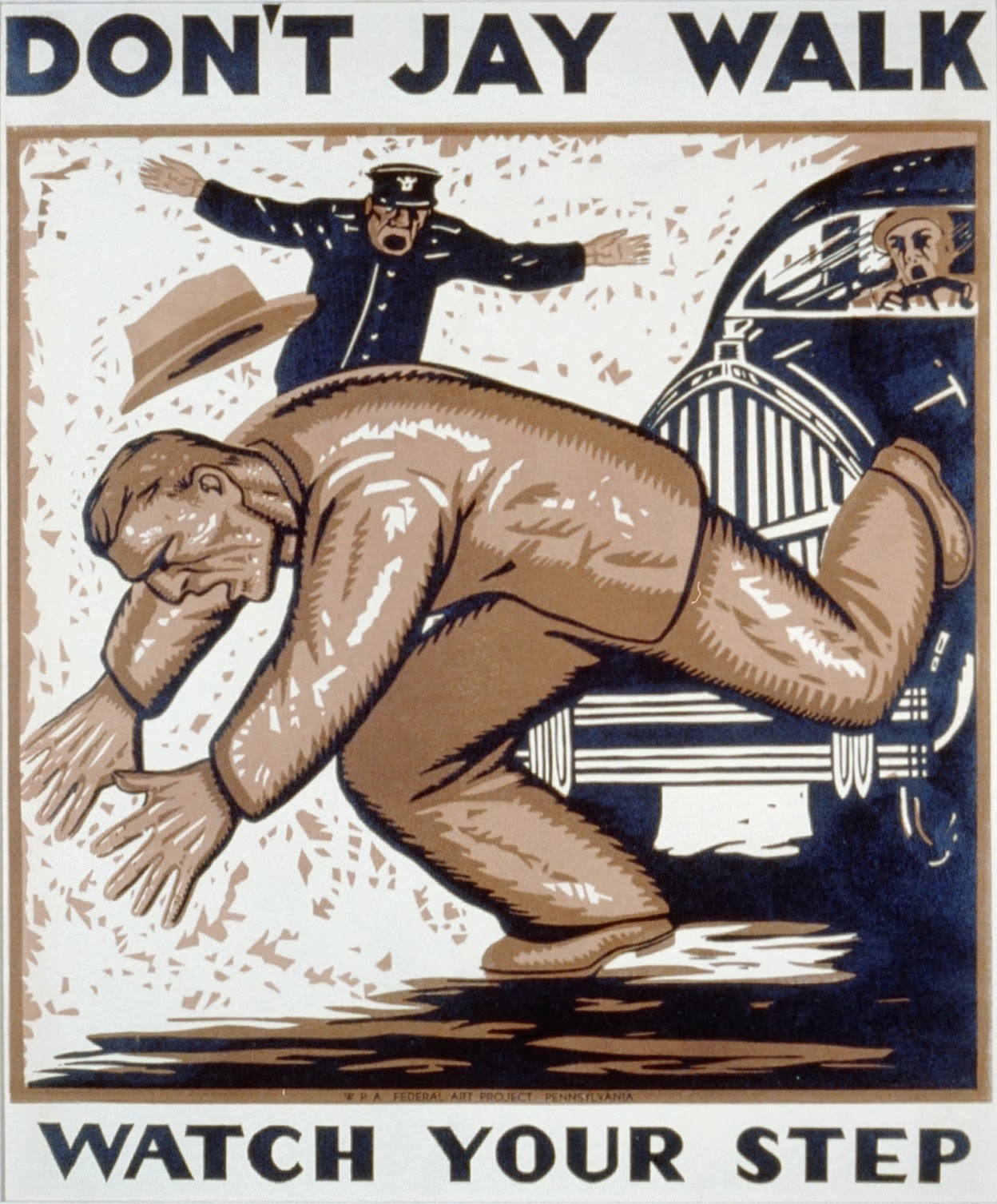 |
| A man presents children to the automotive beast: “Sacrifices to the Modern Moloch”, from Peter Norton’s article. |
Last week on Twitter, Streetfilms, a producer of short documentaries about improving life in cities, encouraged their followers to use the term traffic violence as much as possible in the coming year.
Other followers weighed in and offered support:
“Traffic violence” seems to be defined any type of injury or damage to pedestrians or cyclists caused by vehicles. The term hasn’t yet exploded on twitter, but gets used fairly consistently in circles interested in cities, biking, and other pedestrian issues. On January 16th 2014, Atlantic Cities used the term in their article on New York Mayor Diblasio’s new Vision Zero plan. On twitter the term seems to date back to February of 2013, and Aaron Bialick used it in an article on traffic violence from June 20th, 2012. Transportation Alternatives used it what seems to be a 2011 report entitled Walking in Traffic Violence.
Will the term stick? Hopefully so, and long term we might see a shift from pedestrian fatalities being understood as “mishaps” or “accidents” in which cars and drivers are neutrally perceived to a more person-focused understanding. The time is ripe, as in 2012 in the United States, pedestrian fatalities caused by vehicles rose by 6.4% and cyclist fatalities by 6.5%. However, #trafficviolence isn’t a new concept—in fact, in the early days of automobiles, cars were seen as harmful and dangerous, especially for neighborhoods with children. One of the best articles on the transformation in awareness from then to now is Peter D. Norton’s article “Street Rivals: Jaywalking and the Invention of the Motor Age Street.” He explains the process through which streets (and ultimately cities) transformed from spaces for people into spaces for cars. Part of this was a determined effort to make “traffic safety” the responsibility of pedestrians:
Before others in motordom, Charles M. Hayes recognized that industry leaders had to reshape the traffic safety debate. As president of the Chicago Motor Club, Hayes warned his colleagues that bad publicity over traffic casualties could soon lead to “legislation that will hedge the operation of automobiles with almost unbearable restrictions.” The solution was to persuade city people that “the streets are made for vehicles to run upon.” Pedestrians would have to assume more responsibility for their own safety.
 |
| An early campaign poster to demonize the pedestrian. From Norton’s article. |
The entire article is a fascinating read and quite illuminating about how we have been conditioned to see things like “jaywalking” as a negligent (and illegal!) act. Atlantic cities also wrote a good article about this in 2012 with their history of the jaywalker. Hopefully as Vision Zero gets underway awareness of #trafficviolence will continue to spread. As Norton has explained elsewhere, we need to take back our streets, wide, multi-lane roads are safe only–“in the mind of the traffic engineer.” Hopefully the next decades will see a shift towards an understanding of cities and streets as places in which the pedestrian isn’t a pesky nuisance, but rather the celebrated protagonist.
 |
| Library of Congress |

